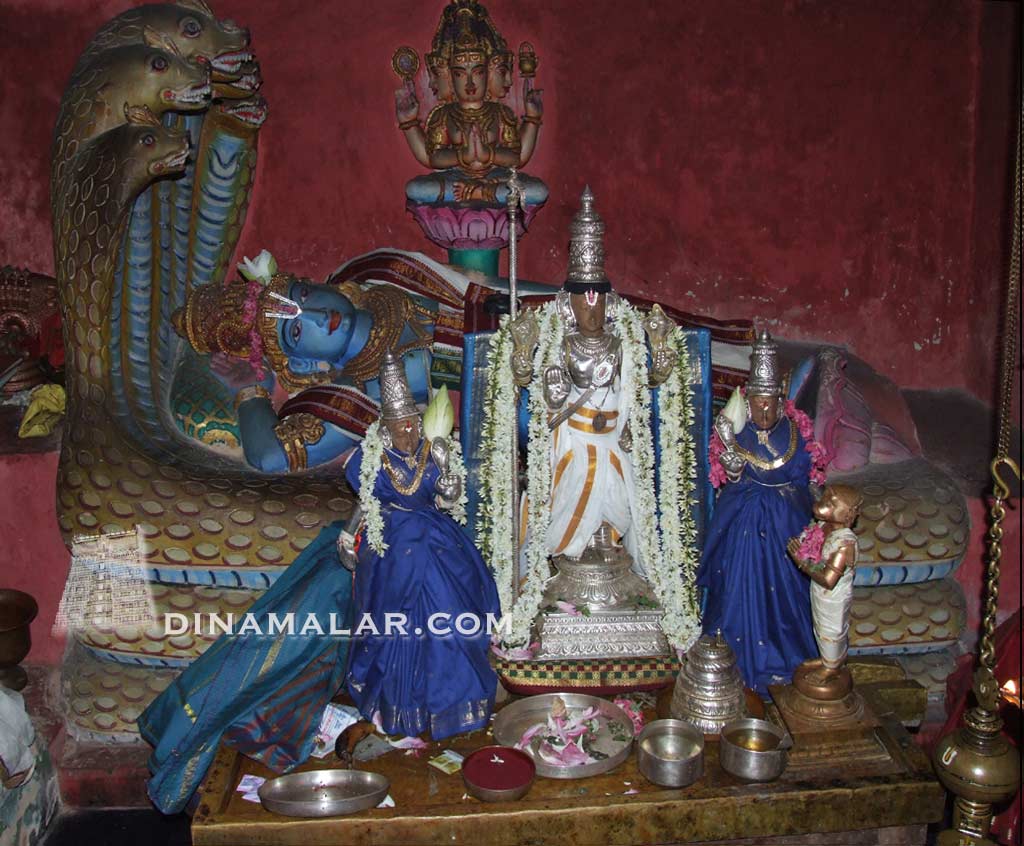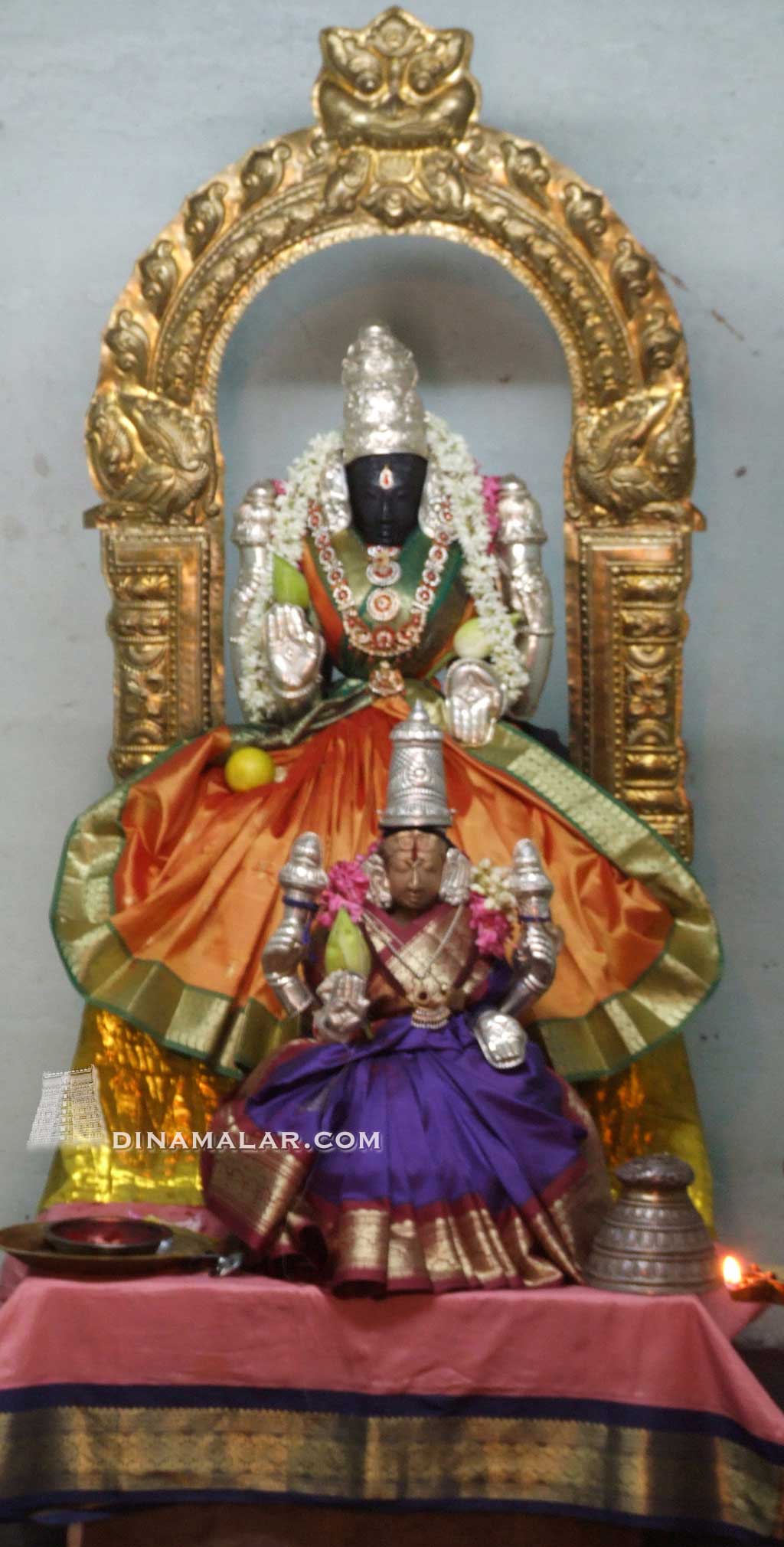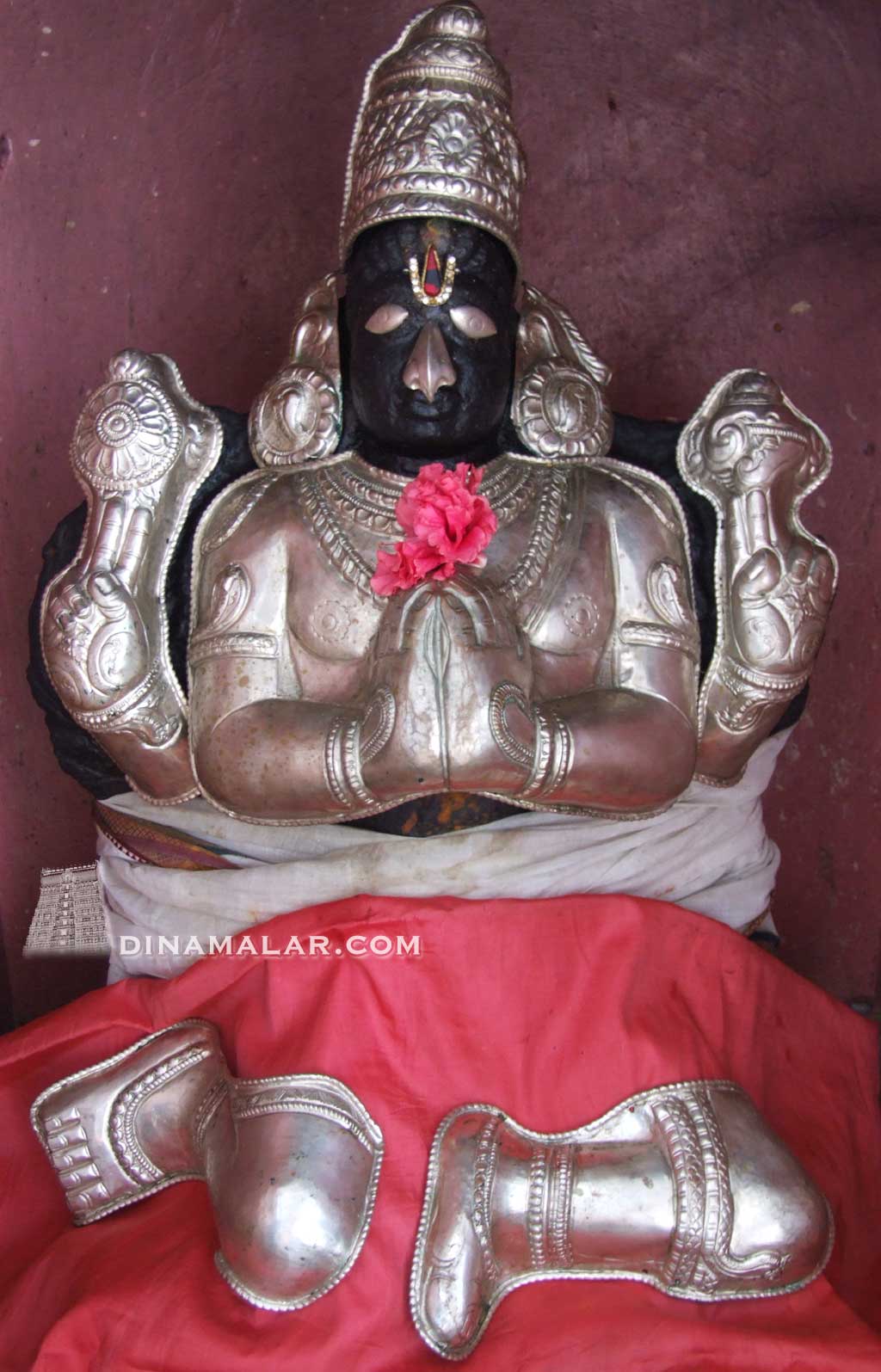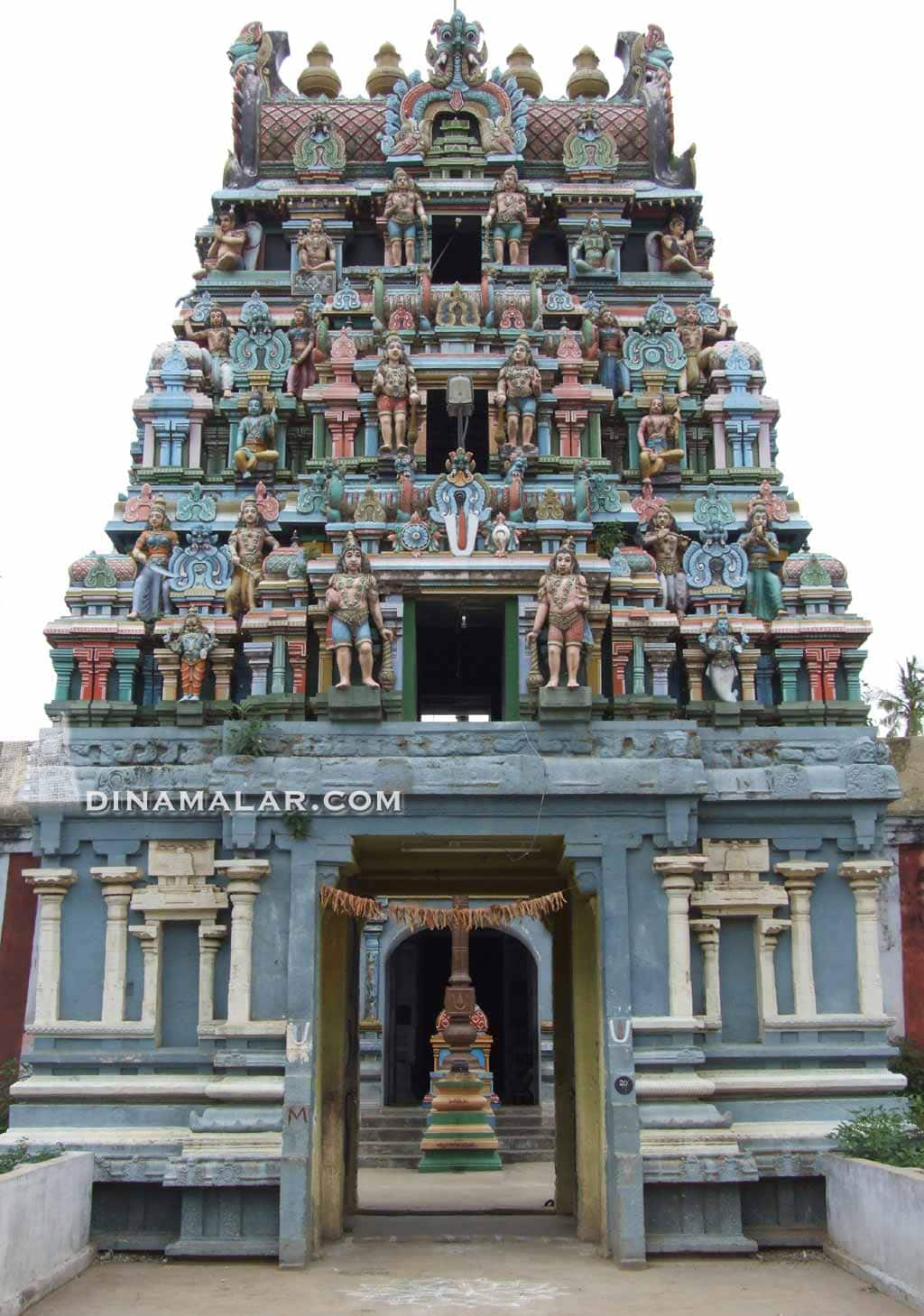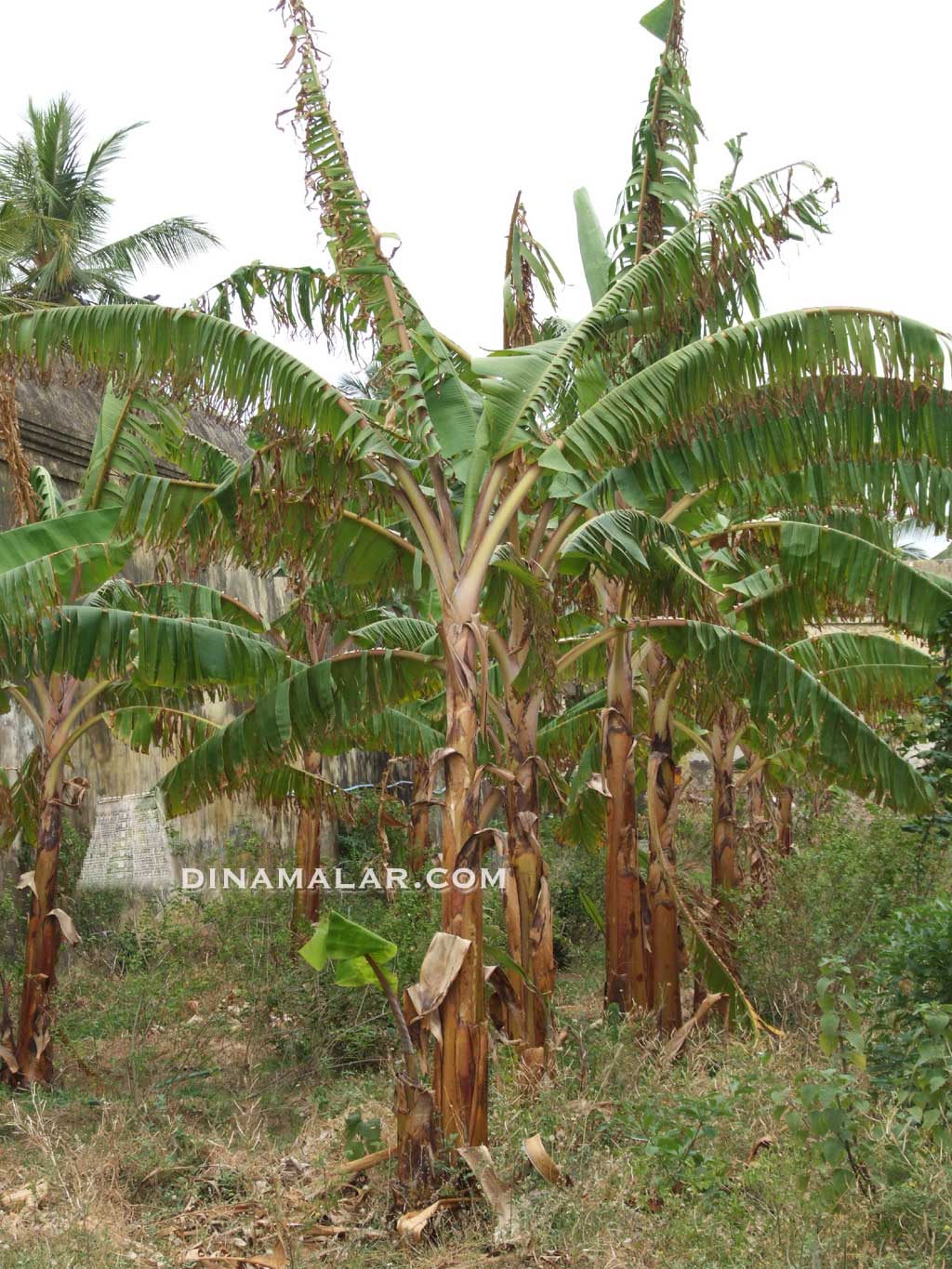We are in the sannidhi of Sri Maragathavalli Thayar in Sri Kolavilli Rama temple in Thiruvelliangudi, one of thr 40 Chola region Divya Desam. This beautiful Thayar is equal in all respects to the Lord here. Thirumangai Alwar says, whoever sincerely sings the 10 pasurams on this Kshetram(Periya Tirumozhi, 4.10) will rule this world.
On one side of the temple is the temple pond, sannidhi of Hanuman and Dwajasthambam. On the other side Alwars are there. Alwar describes the plenty of water available here.
We will now proceed to sloka 4 of Chapter 8. In sloka 3, Sri Krishna told what is the objective of kaivalyarti and what all he should avoid. He should know mukta atma swaroopam, that is the liberated soul, as the objective. Soul is always associated with body, which is parakruti transformed; and so, unless the soul leaves the body, muktaatma swaroopam can not be realized and so this is the adyatma or the habit to be discarded. Karma is the intercourse between male and female, which results in births. As long as this action is there, it will impede attaining muktatma swaroopam and so celibacy should be practiced to reach atma swaroopam. In the 4th sloka contains the things Aiswaryarti should know in the first half and the common deeds for all the three types of devotees in the second half of the sloka:
 |
| A VIEW OF THE TEMPLE |
On one side of the temple is the temple pond, sannidhi of Hanuman and Dwajasthambam. On the other side Alwars are there. Alwar describes the plenty of water available here.
We will now proceed to sloka 4 of Chapter 8. In sloka 3, Sri Krishna told what is the objective of kaivalyarti and what all he should avoid. He should know mukta atma swaroopam, that is the liberated soul, as the objective. Soul is always associated with body, which is parakruti transformed; and so, unless the soul leaves the body, muktaatma swaroopam can not be realized and so this is the adyatma or the habit to be discarded. Karma is the intercourse between male and female, which results in births. As long as this action is there, it will impede attaining muktatma swaroopam and so celibacy should be practiced to reach atma swaroopam. In the 4th sloka contains the things Aiswaryarti should know in the first half and the common deeds for all the three types of devotees in the second half of the sloka:
adhibhutam ksaro bhavah
purushas cadhidaivatam
adhiyajno ’ham evatra
dehe deha-bhrtam vara
purushas cadhidaivatam
adhiyajno ’ham evatra
dehe deha-bhrtam vara
"O best of the embodied beings, the physical nature, which is constantly changing, is called adhibhuta [the material manifestation]. The universal form of the Lord, which includes all the demigods, like those of the sun and moon, is called adhidaiva. And I, the Supreme Lord, represented as the Supersoul in the heart of every embodied being, am called adhiyajna [the Lord of sacrifice]."
Deham = body, bhrtam = possessing, vara = great [Arjuna, is praised as greatest among men], so Arjuna should realize that he has been blessed with a good body in a good family. He should therefore, not waste his life but pursue noble deeds. Janaka says, while offering his daughter Sri Sita in marriage to Sri Rama, that Janaka is proud to be in the family where Sri Sita is born. Here Arjuna is a close relative and friend of Sri Krishna. Arjuna should not follow to become aiswaryarti nor kaivalyarti, to keep up the family name. Aiswaryarti means desiring to enjoy wealth. It does not mean to be a millionaire or even billionaire. These are trivial wealth. It means desiring to possess the wealth like what Brahma has, that is entire universe. Wealth of the Universe can not be easily assessed. Because this person is worshiping the Lord to get wealth and the giver, that is the Lord, has boundless wealth and mere billions of dollars or rupees , is very trivial. This person should demand wealth, by which request, the donor also will be high in esteem. Of course the main theme is not to seek the Lord perishable wealth or atman swaroopam, but serving Him for ever here and in Viakuntam. But, if there is a person wanting to enjoy wealth, then he also should know what to ask and should not limit to very meagre riches. We should also know that all these pleasures, arising from such wealth, have to be felt by the sense organs of the person desiring such wealth. Even if it is Indra or other gods, they all seek pleasures of the sense organs only. None can desire to see by mouth nor smell with eyes. So, the common pleasure sought by all these aiswaryartis , is to see with eyes, listen with ears, and so on. All these sensual pleasures emanate from the five great elements- pancha maha bhuta- we have seen earlier [space- sound, air - touch, fire - image, water - taste and earth - scent]. So these are called adi bhutam . Ksara = decaying or perishing, bhava = habit. So, ever changing and decaying these pleasures of the great elements are referred to as adi bhutam. This is the objective of aiswaryarti. Purusha = equal to Brahma, possessor of all the worlds, adi daivatam = to be like that god [ Brahma]. Now, the second half of the sloka contains the common action for all the three types of devotees. Adi yajnam = God to be worshiped by Yagna, aham eva = Me [Sri Krishna] alone. Atra dehe = all these [other gods to whom everyone thinks he is doing the yagna] are mere bodies [and the soul is Sri Krishna]. Though one may perform an yagna in favor of a particular god, we should know that those gods are mere bodies and the soul is Sri Krishna. So the Lord is adiyajna. They [all gods] get these because they are His body and not on their own. We will take leave of Sri Kolavilli Rama and Sri Maragathavalli Thayar and move to next kshetram.
(continued)

